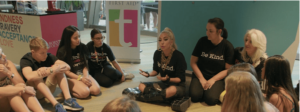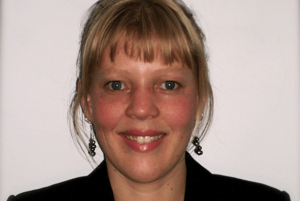
Spotlight on Teen Suicides
Thanks to Australian Rotary Health and its funding, teens are being given the tools they need to navigate their way through the sometimes rocky and turbulent adolescent years.
Teen Mental Health First Aid (tMHFA) launched in Australia in 2014, and has so far taught skills, coping strategies and information on emotional and mental health issues to about 60,000 high school-age students.
Not only is tMHFA making a difference to the thousands of students who have experienced the program, but the curriculum has caught the attention of A Star is Born actor and singer Lady Gaga. According to reports, Lady Gaga has been so impressed by the mental first aid course, that she is exporting the program through her Born This Way foundation to teens in the US.
Australian Rotary Health provides grants for research relating to the mental health of young Australians for up to three years per project with funds up to $70,000 per year. There are currently 27 related programs funded by ARH at a total investment of $1,384,683. In total, they have invested over 34 million dollars in funding to date.
Dr Laura Hart, a research fellow at the Centre for Mental Health at the University of Melbourne, and a co-designer of the tMHFA program says that the tMHFA program is safe and effective.
“Students who receive teen mental health first aid are nine times more likely to ask a friend about suicidal thoughts in a supportive way,” she said.
“That’s a strategy we know from research is highly likely to prevent suicide.”
One in seven young people experience a mental health condition in any given year, and about one in 40 attempt suicide.
“Suicide is the most common cause of death in young people,” says researcher Dr Claire Kelly, who works alongside Dr Hart to research, raise funds and roll out the program throughout Australian high schools. “We are in a crisis,” she says. “We are in a crisis in mental health. This is a program that can save lives.”
How the tMHFA program works
Over three hour-long sessions the tMHFA course covers problems such as anxiety and depression and eating disorders, and crisis situations like suicidal thoughts and behaviours.
“It helps kids identify when a friend might be in trouble and how to have a supportive conversation,” says Dr Kelly, who has 14 years of research experience in mental health.
“Laura and I developed the curriculum for teen mental health first aid, and since then, Laura has remained very healthily involved in the research, while I have remained focused on the roll out and running the courses.”
The roll out includes allocating resources and teachers to schools throughout Australia, including remote areas.
The need for teen suicide support
Studies show the program works. Research through the University of Melbourne has found high school students who go through the course are better able to recognise an anxiety disorder, and are significantly more confident in helping a friend with a mental health problem.[i]
Dr Kelly says the program is saving lives that would have been lost to suicide, but there are still many out there who are not receiving enough support.
“We know already kids are supporting each other at times when they’re having thoughts of suicide and other difficulties,” she says.
“And we know they’re doing that at a very high level but probably not very effectively.”
The program is designed to give teenagers the tool to help their friends if they are showing signs of suicidal tendencies or developing mental health problems. “Historically there’s been a reluctance to teach teenagers about suicide. The focus though, is to encourage teenagers to get an adult involved. We explain how and when to do this.”
How ARH has helped
Dr Kelly is immensely grateful to Australian Rotary Health and the role that they have played in aiding the research funding for the project.
“I have a long history with Rotary Australia,” she says. “It has been so supportive of tMHFA. My post-doctoral fellowship was funded by Rotary, in the name of a farmer in NSW who had taken his life. His community and Rotary club raised the money and wanted the funds to establish guidelines and content which we teach.
“At a more local and club level, Rotary have played a really important role – supporting the community roll out, encouraging more clubs to join, teaming up with local government areas to look at funding, and helping increase awareness in more remote community regions.”
Dr Kelly says that the work of ARH is a good example of how to invest in your community and empower it too. “That’s when you start to get big changes. After a while , the Rotary Club will remain a partner, but the local community will take ownership and wonderful things will happen.”
Initially, says Dr Kelly, government agencies were reluctant to commit to their project and research. “Whereas Rotary have supported the research and the members of various communities have made a difference by raising funds.”
The team have responded in kind. Their research has been published in a way that the community can understand it. “This is part of a really symbiotic relationship with Rotary, as they have helped to publish our findings throughout various community channels,” she says. “I love the way Australian Rotary Health is so grass roots and community focused.”
What’s next?
Other than the support shown from international superstar fan Lady Gaga, Dr Kelly and Dr Hart are working hard to support the changing face of their training program as it has matured since its launch. “One of the things we want to do is strengthen the tie with local governments and councils – to people in other areas who couldn’t see it working and provide them with a model that would work.”
They intend to increase the number of training in the community, particularly amongst the more transient population of the Northern Territory.
They also intend to apply for further grant money. “As the research is continuing, we have been awarded a larger grant, almost triple the amount of our original. We would never have gotten that grant without Rotary taking a risk with us.”
[i] https://mhfa.com.au/mhfa-research
Story written by Charmaine Yabsley.


